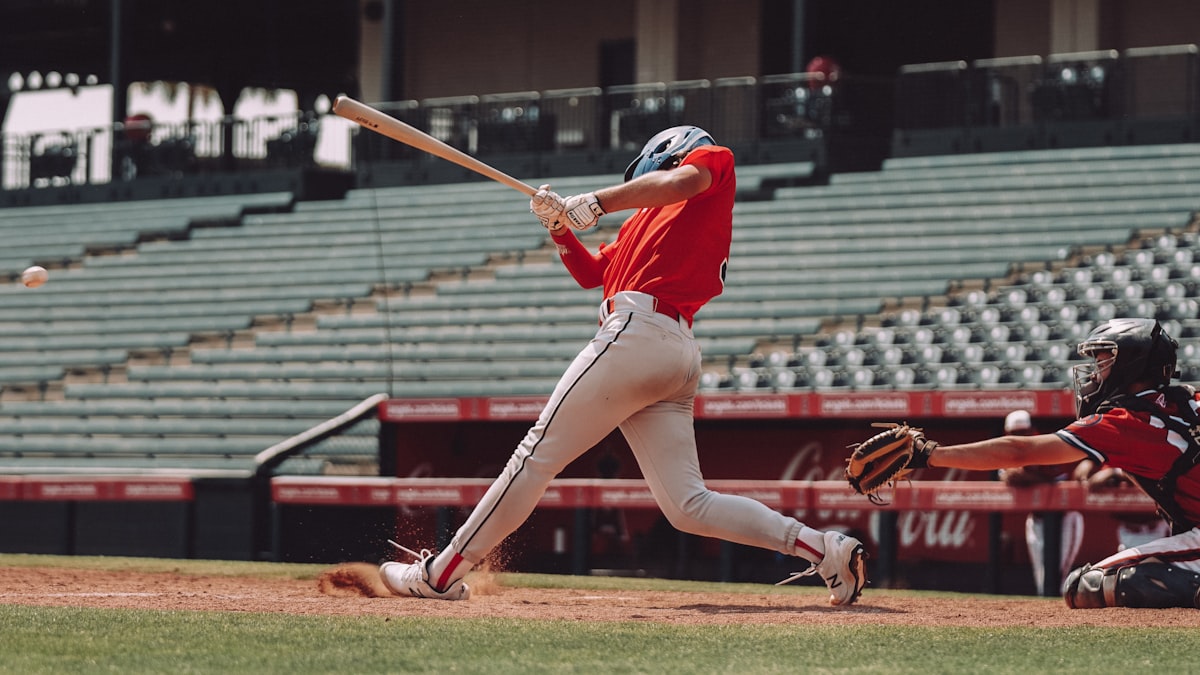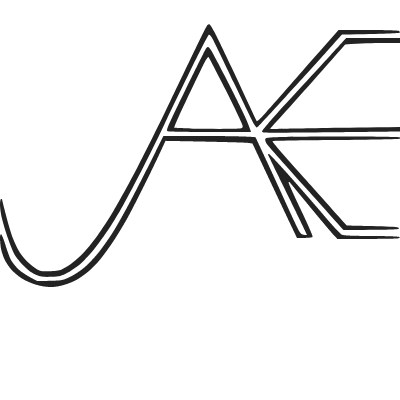The Cobra
The things he said were, perhaps, a bit too complex for us at 14. But I can vividly remember the moment I finally understood precisely what he meant.

Morning practices were always hard to stomach. Somewhat slowly, I made my way up to the big field at Parson’s. The sun, weak and silver, seemed to have gotten stuck about a quarter of the way up the flypaper sky. I’d left my hat in Hutch’s dad's Cherokee, so I borrowed a back-up from the bin—a big rubber tub Hollings set outside his office—a tub that, along with extra hats, held practice jerseys, belts, and even one or two pairs of socks for those of us that, as Hollings said, might forget our hands if they weren’t attached to our wrists.
I always remembered my hands, but I grabbed a back-up this or that from the bin more often than I cared to admit.
As I approached the diamond, I noticed Hollings was already there busily arranging tees against the fence that ran from the end of the first-base dugout to the right-field corner. He’d already placed a half-dozen tees the same way against the third-base fence.
“What’s he up to?” Hutch asked as he squinted toward Hollings.
“Dunno,” I answered. “Tee work, I guess.”
“No shit, Tommy,” Hutch snorted. “You think?” Hutch smiled and pointed across the diamond to the third-base line. “And,” he continued, “who the hell’s that?”
I followed his outstretched finger to a beast of a man dressed in baseball pants and a bright-red Mizuno pullover—the rubberized ones that the pros wore.
I shook my head and shrugged.
“Oh shit,” Jimmy Rollins exclaimed. Rollins had silently strolled up alongside Hutch. I hadn’t even noticed he was there. “That’s the fucking Cobra.”
“Who?” Hutch replied.
“The Cobra,” Rollins repeated. “You know,” he added, “Dave Parker.”
I looked back across the diamond and wondered why the hell Dave Parker would’ve been at our practice. Then, I stowed my bag in the dugout.
As a team, we ran a pole, all of us scattered along the warning track at various intervals. Our metal-spiked footsteps were paced by the sound of sand and crushed gravel. I glanced to my left. It was hard to tell for sure, but Rollins may have been correct: The guy on the third-base line could well have been Dave Parker.
Dave Parker was a member of the Pittsburgh Lumber Company: the heavy-hitting, hard-slugging bunch of Pirates who racked up wins, homers, and RBIs by the boat load during the late-1970s. Parker was famous for swinging a sledge hammer in the on-deck circle. In June of 1978, Parker collided with Mets’ catcher John Stearns during a play at the plate and suffered (among other things) a fractured left cheekbone. Doctors advised him to rest and heal, but The Cobra wanted—perhaps needed—to play.
“I’m the toughest man in the world,” he reportedly told then-Pirates manager Chuck Tanner. “I can see,” he added. “If I can see,” he continued, “I can play.”
To protect his injury, he was fitted with a hockey mask that he promptly painted half-yellow, half-black. Parker claimed that he added the paint for “maximum intimidation.” He only wore it in one at-bat due to the fact that the mask’s oval-shaped eye holes impeded his ability to effectively track pitches at the plate.
Dave Parker was a legend. And he may have indeed once been the toughest man in the world. By the time he turned up at our practice, though, he was an aging All-Star angled to finish his career in his hometown.
After running our pole, we stretched in right field and watched Hollings and The Cobra cut it up along the third base line. Just before we broke for our throwing progression, Parker went into the third base dugout and grabbed a small gym bag. He brought the bag over to Hollings, unzipped it, and showed Hollings what lay inside. Hollings erupted in laughter and Parker smiled a wide, toothy grin before he set the bag back on the dugout bench. He and Hollings continued to chuckle until Hollings put two fingers in his mouth and whistled.
“Fellas,” he shouted. “Hey, fellas,” he repeated. "Bring it on in.” He motioned us over toward third base, his arm flapping above his head.
We jogged to the third base cutout and gathered around Hollings.
“So,” Hollings picked up. He gazed all of us. “I asked Dave to come out and talk to us about being more efficient at the plate.” His voice was a bag of gravel dragged over asphalt. “Efficiency is everything, and Dave’s always been efficient. Always,” he added. “But,” Hollings continued, “most folks don’t really know what they’re looking at. His hands,” Hollings said, “are some of the quickest in baseball. There’s efficiency in that quickness, which is why he’s able to generate so goddamned much power.” Hollings smiled. “By staying efficient and getting to the ball quickly, you can generate more power, too.” He laughed, mostly to himself. “Or, at the very least, you’ll become a better hitter by keeping your hands inside and not getting so damn long and disconnected.”
Hollings turned around to face the third base dugout. “Dave,” he said, his arm extended.
With that, The Cobra emerged. We clapped as we always did, and then as if scripted, we all let out a collective gasp as Dave Parker jogged toward us clad in baseball pants, a BP pullover, Reds hat, and that famously-terrifying, black-and-yellow hockey mask.
None of us, I think, knew whether to laugh or run away, but Hollings said it was the quietest, most attentive he’d ever seen us.
The Cobra stood there for a few moments—for an eternity. His eyes flashed behind the mask, and then he spoke. “Gentleman,” he said, his raspy voice drawling syllables together as if they didn’t exist. “It’s good to be here, good to get out this morning.” He paused and flexed his neck side-to-side as he stretched. “Y’all seem a little quiet.” He glanced around, the yellow half of the mask glinting in the strengthening sun. “Somethin’,” he continued, “on your mind?”
The uncertainty was palpable. Hollings erupted in somersaults of laughter. Immediately, we stared at him as if he was on fire. “Man, Park,” he said, finally. “I really think you coulda done the whole damn lesson in that thing.”
“Prally still could,” Dave Parker said as he shrugged and pulled off the mask. He set it on the grass beside him. His smile was contagious, and almost instantly, we relaxed, loose but still focused.
“Look,” The Cobra chirped, “Hollings asked me here to talk about hitting, and that’s what we’re gonna do. Specifically,” he added, “we’re gonna talk about keeping our hands inside. ‘Cause, you know,” he rasped, his tone easy, “the quickest route between two points is a straight line.” His eyes connected, it seemed, with each of us in turn, and if I didn’t know better, I might’ve thought The Cobra saw something—some tiny, unique thing—in each of us that we hadn’t yet seen in ourselves. I hoped, I remember thinking, that eventually I’d see in myself whatever he saw that day. I’m still not certain I have, and it bothers me—the thought that maybe I’ve missed it all this time, obscured it with my fears and worries, my anxieties. Maybe, though, it makes me sad more than it bothers me, but it’s really tough for me to be that honest.
Dave Parker adjusted the tee Hollings set in front of him, and we all tuned in even tighter.
“So look,” The Cobra said. “Tee work is the most important thing you can do as a hitter. It’s essential,” he added. “Anybody can hit a ball off a tee—,” he continued, “it ain’t moving, just sittin’ there, waiting. But,” he said, his eyes now roving our team, “you gotta do your tee work intentionally like it matters more than anything else you do.” He stared at us and paused. “Tee work can be your best friend. It’ll let you breakdown little parts of your swing. It'll expose,” he continued, “your faults and shortcomings. Tee work,” he said, “will shine a light on those nasty, little dark parts of your game. Parts,” he added, “you might just otherwise ignore or try to forget about.” He smiled a wide, Cheshire Cat grin. “But the tee won’t let you. It won’t let you forget a goddamned thing.” He laughed and twirled what at the time was the biggest baseball bat I’d ever seen. “So look,” he continued, “when you’re doing your tee work, start with the set-up.” He reached into his back pocket and pulled out a lily-white baseball. “The seams,” he said, “make two Cs—one forward, one backward. For a lefty, it’s forward, righties see it backward.” He held the ball in his massive hand and showed us the seams. “See that?” he asked.
We nodded and murmured affirmations.
“You get loaded, here,” The Cobra said, his enormous bat clutched in only his top hand, “and everything in the whole chain follows.” He pinched his scapula to exaggerate the load position as he tapped the bat knob with his bottom hand. His stride was easy, and I noticed how solid, how balanced he was. “Get here,” he continued, still holding his bat one-handed in the load position, “and your hands can’t help but be inside.” He brought the bat forward slowly, one-handed, to let us see his path. It was tight, orderly, and connected. “Hands inside,” he said. “Hit the C and stay through the ball. Remember,” he repeated, “the quickest way between two points is a straight line, and straight lines come from deliberate connection.”
At that point, Dave Parker was probably talking over most of our heads. The things he said were, perhaps, a bit too complex for us at 14. But I can vividly remember the moment I finally understood precisely what he meant.
My son, Will, was born a week-and-a-half after his due date. He was my wife Emma’s and my first child. And while his is late arrival didn’t pose any significant problems, he had a whole mess of trouble exceeding the blood-glucose level benchmark the doctor wanted—needed—to see. Over and over, they tested him, and each time he writhed as the nurse or attending dug at his tiny heels. Both of them were bruised, torn-up and bloody, and I winced as I forced myself to look each and every time because not to look felt more awful. I was his dad, after all, so looking was the least I could to do, though I really felt like I needed to do a lot more.
When one of the nurses asked me if I wanted to come with Will while they gave him the state-mandated newborn hearing screening, I eagerly said yes.
“You don’t have to,” the nurse replied through a soft smile. “I mean, most dads just stay and sleep because, you know,” she shrugged, “there’s no sleep after this.”
I squinted at her, past her, and shook my head. “No worries,” I said. “I’m good.”
I stood, forced a smile, and pushed the weird, plastic bassinet behind her down the wide hallway. We twisted and turned past room after room after room until, finally, the nurse stopped, scanned her badge, and motioned me through a sliding door that terminated in a small, dark room.
The nurse fumbled for the light bank, then adjusted the overheads to a soft, amber glow. She outfitted Will with a pair of headphones that squished his tiny cheeks so his lips pursed. I wanted to laugh but stopped myself as I thought about his awful heels.
I watched as the nurse fiddled with some sort of instrumentation, its panel complex and partially illuminated. After a few moments of somewhat audible, frustrated sighs, she spoke. “I’ve got to go find a different unit,” she muttered, suddenly checking her herself. “This one,” she continued, her tone brighter, “hasn’t been updated.” She smiled again. “You can stay here. No need to keep moving him,” she motioned to Will, “all over the hospital.”
I nodded. “Thanks.”
She disappeared as the automatic door swept her out in the hall.
I leaned over Will’s bassinet, the headphones still pushing his lips toward me. His eyes rattled around the room, their pupils swollen in the low light.
I leaned close, as close as I possibly could, and I knew immediately what Dave Parker meant all those years ago when he talked of deliberate connection. I knew as I whispered to Will, “I love you, and I always will. I love you, and I’ll always be here for you, to help you, to protect and support you. I love you more than anything.”
I knew then what it meant to be deliberately connected, and I hope like hell I never, ever forget.
Tommy Vollman is a writer, musician, and painter. For many years, he was a baseball player. He has written a number of things, published a bit, recorded a few records, and toured a lot. Tommy’s work has been nominated for the Pushcart Prize and the Best of the Net. His stories and nonfiction have appeared in The Southwest Review, Two Cities Review, Hobart, The Southeast Review, Palaver, and Per Contra. He has some black-ink tattoos on both of his arms. Tommy really likes A. Moonlight Graham, Kurt Vonnegut, Two Cow Garage, Tillie Olsen, Willy Vlautin, and Albert Camus. He's working on a short story collection and has a new record, Brooklyn. He currently teaches English at Milwaukee Area Technical College and prefers to write with pens poached from hotel room cleaning carts.
www.tommy-vollman.com
www.facebook.com/tomvollman
@tomvollman
@tynedarling



